General Insights
Highlights
Scroll below the selected highlights for the full set of indicators.

Investment
Investment in energy efficiency over the past decades has shifted our economic, social, and environmental trajectory.

Decoupled Energy Consumption
From 1980 to today, the U.S. decoupled energy consumption and economic growth and doubled energy productivity (GDP per energy consumed).

Greenhouse Gas Emissions Reductions
The U.S. would have produced almost 80% higher carbon emissions in 2021 without energy efficiency investments.

Efficient Consumption
In large part as a result of energy efficiency, energy consumption has remained largely flat in spite of a growing population, increasing use of appliances and devices, and increasing vehicle miles traveled.
Efficiency Policies
Six key energy efficiency policies and programs, including vehicle, appliance, and equipment efficiency standards, ENERGY STAR®, utility sector energy efficiency programs, research, development, and demonstration (RD&D), and building codes, saved approximately 32 quads of energy in 2021 – this is approximately 30% of what energy consumption would have been in their absence.
Cost for Consumers
Without the energy efficiency investments made since 1980, energy consumption and emissions would have been 77% higher, and consumers would be paying nearly $800 billion more per year in energy costs.
1
Energy Productivity
The U.S. has more than doubled energy productivity since 1970
Source: EIA (2022) Monthly Energy Review
DETAILS
From the 1950s to the 1970s, the economy (GDP) and energy consumption grew at similar rates, an indicator that economic growth and energy consumption were interdependent, or “coupled” with one another.1
However, by the mid-1990s, by using energy more effectively, our economic growth surged past energy consumption, decoupling the two quantities and allowing American society to do more with less energy.
Since 1970, U.S. energy productivity has improved by 170%, driven mostly by improvements in the energy efficiency of homes, buildings, industry, and transportation.
2
Energy Consumption and Emissions Reductions
Energy consumption and carbon emissions would be 78% higher without energy efficiency investments
Source: EIA (2022) Monthly Energy Review
DETAILS
Increasing energy productivity is the result of a combination of energy efficiency policies and innovations as well as structural changes in the economy. Had U.S. energy productivity remained at the level observed in 1980, U.S. energy consumption today would need to be more than double its current value in order to achieve the same level of our current economic growth.2 ACEEE analysis estimates that energy efficiency is responsible for approximately 60% of these energy productivity improvements.3
Similarly, the U.S. would have produced 78% higher carbon emissions, or an additional 3,810 million metric tons of carbon dioxide, in 2021 without energy efficiency investments. This highlights the extraordinary scale of energy efficiency as a tool for decarbonization.4
3
Per Capita Primary Energy Consumption
Efficiency has decreased per capita energy use since 2000
Source: EIA (2022) Monthly Energy Review
DETAILS
The 1980-2021 period witnessed trends that could be expected to significantly increase energy demand: the U.S. population grew by 46%,5 the vehicle miles traveled per capita increased by 41%,6 the median square footage of new single-family houses completed increased by 42%,7 and the economy nearly doubled in size.8 From 1983 to 2000, total and per capita primary energy consumption increased gradually. But over the last 21 years, energy consumption per capita has consistently decreased (by 16%), and overall energy consumption has plateaued (1% decrease). Energy efficiency was a critical element that stabilized energy demand.
4
Energy Efficiency Policy and Program Impacts
Six key energy efficiency policies and programs reduced total U.S. energy consumption by about 30%
Source: ACEEE (2022), ASAP (2022), EPA (2022)
DETAILS
Six key energy efficiency policies and programs reduced total U.S. energy consumption by roughly 32 quads in 2021, equal to roughly 30% of total U.S. energy consumption in that same year, or the energy use of the entire transportation sector.9, 10
Each program or policy is described in greater detail in this report: vehicle fuel economy standards (indicators #45-46), appliance and equipment efficiency standards (indicators #24-25), ENERGY STAR® (indicators #26, #33, #44), utility sector energy efficiency programs (indicators #12-19), federal research, development, and deployment investment (part of indicator #6), and building energy codes (indicator #34).
5
Energy Expenditures and Cost Savings
Efficiency investments have reduced today’s energy expenditures by approximately $800 billion (2020$)
EIA (2022) Monthly Energy Review
Historical Tables, Budget of the United States Government, Fiscal Year 2022 (2021). Budget FY 2022
DETAILS
Energy efficiency has also led to enormous bill savings across the economy. Based on some simple assumptions,11 the chart shows the total energy expenditures across the U.S. economy from 1980 to 2020, and the energy cost savings each year due to energy efficiency investments since 1980. As energy prices overall dropped since 2008 (until this year), the amount of energy saved each year grew, and the dollar savings have remained around $800 billion each year.
To put this number in context: if we had had the same level of economic growth without these savings, energy spending would have been 77%, or $774 billion, higher in 2020.
6
Energy Efficiency Federal Funding
Federal funding for energy efficiency has increased by over 60% in the last fifteen years
*Total does not include new funding from the 2021 Bipartisan Infrastructure Bill or the 2022 Inflation Reduction Act, as those funds are expected to be spent beginning in 2023.
Source: ACEEE Analysis (2022)
DETAILS
Federal policymakers continue to value energy efficiency by increasing appropriations for energy efficiency research, development, and demonstration (RD&D), increasing by 60% from $826 million to $2.5 billion in constant dollars from 2008 to 2021 (with a one-time spike in 2009 due to stimulus spending from the American Recovery and Reinvestment Act).
For context, the share of energy efficiency spending relative to the total U.S. federal RD&D spending (reported at $165 billion in FY2021)12 was only 1.5% in FY2021.
The Bipartisan Infrastructure Law of 2021 and especially the Inflation Reduction Act of 2022 include unprecedented investments in deployment of energy efficiency technologies, including billions of dollars for home energy retrofits, heat pumps, electric vehicles, and more. These programs will be implemented over several years.
Footnotes
- DOE (2022), Energy Intensity Indicators: Highlights
- EIA (2022), Monthly Energy Review
- ACEEE (2015), Energy Efficiency in the United States: 35 Years and Counting.
- This chart assumes the same energy intensities as the chart above and uses the actual emissions intensities per quad of energy use for each year.
- U.S. Census (2022), Population Estimates
- Moving 12-Month Total Vehicle Miles Traveled/Total Population
- U.S. Census (2022), Characteristics of New Housing
- BEA (2022), National Income and Product Accounts
- RD&D savings are a conservative ACEEE estimate informed by NREL (2000); PNNL (2004): DOE (2010).
- EIA (2022), Use of Energy Explained.
- Assumptions: EIA estimates total energy expenditures for each year. Based on the energy savings as a fraction of energy use each year, we estimated total energy cost savings as a fraction of expenditures. Note: the energy expenditures are shaped by volatility in energy prices as well as changes in energy use.
- USASPENDING.gov (2022), Department of Energy (DOE)

